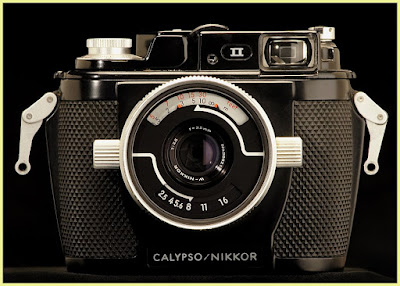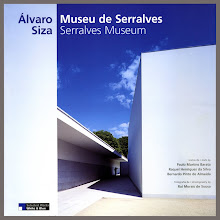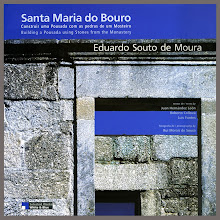...
While I was preparing my first post on Photo Gear, photographing the Flektogon, I came to realize that over the years I had assembled and used a variety of 35mm lenses. I am talking about 35mm lenses for the 35mm film format, that is.
I still use, at least, one more 35mm lens, a Rodenstock Apo-Grandagon 35mm f. 4.5, wich is designed to be used on a 6x9 camera with shift movements, or even on a 6x12 without movements. But that is another story, that I will leave for another occasion. That 35mm in a 6x9 camera becomes a super-wide, and that is not the subject here.
Has a matter of fact, I consider 35mm, as my "normal" focal length, instead of the traditional 50mm. I think that it better suits my normal vision, the 50mm is already "croping" too much the way I look into a scene, the way I perceive reality around.
So let's think of it as a kind of normal-wide, or wide-normal, as you wish. It really doesn't matter!
To each optic, I tried to match the right body, meaning from the same or a similar age. At least more or less... I didn't exactly go check the serial numbers in some tables...
Let me just have my fun!
(All equipment photographs were shot using a Canon EF f5.6/400mm L+Canon 30D. Light was, as usual, supplied by Hensel Studiotechnik).
I still use, at least, one more 35mm lens, a Rodenstock Apo-Grandagon 35mm f. 4.5, wich is designed to be used on a 6x9 camera with shift movements, or even on a 6x12 without movements. But that is another story, that I will leave for another occasion. That 35mm in a 6x9 camera becomes a super-wide, and that is not the subject here.
Has a matter of fact, I consider 35mm, as my "normal" focal length, instead of the traditional 50mm. I think that it better suits my normal vision, the 50mm is already "croping" too much the way I look into a scene, the way I perceive reality around.
So let's think of it as a kind of normal-wide, or wide-normal, as you wish. It really doesn't matter!
To each optic, I tried to match the right body, meaning from the same or a similar age. At least more or less... I didn't exactly go check the serial numbers in some tables...
Let me just have my fun!
(All equipment photographs were shot using a Canon EF f5.6/400mm L+Canon 30D. Light was, as usual, supplied by Hensel Studiotechnik).

f 2.8/35mm Schneider Curtagon+Exakta Varex IIb
Coming from the early-sixties, a camera already shown in the previous post about Photo Gear. The rather strange Exakta, this time equiped with a Schneider Curtagon.
This is decidedly a camera not for everyone! It needs to grow on you. It took me some years, but I like it now. As you could see in the post before, I even got a "new" optic for it. Yes, you can find nice lenses for the Exakta. You just need to also find the time, because you better not use it in a rush. For myself I prefer to use it on a tripod. That's also the best way of getting true advantage of the fine optics.

f 2.8/35mm Carl Zeiss Jena Flektogon+f 2.8/35mm Schneider Curtagon
Same focal distance and same aperture, both fine german optical quality (east and west), but a big difference in size! Probably due to the fact that the Flektogon can almost focus to half the distance of the Curtagon...
As far as I can say, both lenses have six elements. The Schneider must be from the (late?) sixties, and the Zeiss, in this version, comes from the seventies.
If you wish to see some other versions, please take a look on Captain Jack's Exakta Pages. Lots of interesting stuff there.
I use a variety of Zeiss and Schneider lenses on other cameras and other formats. Together with Rodenstock, they are my lenses of choice for many applications. You can find them in my Rollei's, Hasselblad's, Corfield, Horseman, etc., etc.
I also use Schneider and Rodenstock lenses in Large Format Photography, and they also equip my enlargers, together with a Leitz Focotar. More about that on a later time...

Now in closest focusing distance... Notice the long way of the Flektogon.

f 2.8/35mm Nikkor-S+Nikon F+ Photomic FTn
The camera that revolutionized the market in the sixties, robing the german's industry leading post. The real pro camera system! The working-horse par excellence...
I must confess, that I have mixed feelings about Nikon: I treasure some optics that I find outstanding, this 35mm belongs to that group, but there were some lenses that never knew how to please me... I also could never understand why Nikon made their optical-glass without half-clickstops...
I never tried the new auto-focus lenses from Nikon. When I decided to go auto-focus, I changed to Canon.
This outfit is from around 1968, and the original owner must have bought it while on duty as a pilot in Vietnam. So at least I was told by the american person who sold it to me in Germany. Each camera has it's own story. If cameras could talk...
I must confess, that I have mixed feelings about Nikon: I treasure some optics that I find outstanding, this 35mm belongs to that group, but there were some lenses that never knew how to please me... I also could never understand why Nikon made their optical-glass without half-clickstops...
I never tried the new auto-focus lenses from Nikon. When I decided to go auto-focus, I changed to Canon.
This outfit is from around 1968, and the original owner must have bought it while on duty as a pilot in Vietnam. So at least I was told by the american person who sold it to me in Germany. Each camera has it's own story. If cameras could talk...
.jpg)
f 2.5/35mm W-Nikkor+Calypso/Nikkor II
Another very good 35mm lens, this one connected to an amphibian armoured-tank, also from around 1968! Another strange beast, developed for diving purposes, but that I rarely used on the ocean.
Yes, sometimes I used it on the beach or in the pool, but I mainly acquired it for stormy-weather and rainy-days photography, so I won't have to sing stormy-monday by looking at my Leicas beeing soaked in the rain...
I find sharpness on this lens to be very good. I like to use it, although it is also that kind of camera that needs to get used to. I miss a light-meter on this one, as the situations when I choose to use it, are not the best to be fumbling around pointing your incident light-dome at something...
I actualy don't use it that much...

f 2.0/35mm Summicron-M+Leica M4-2+Leicameter MR
Here is my "queen of the 35's"!!! Ready to go!
I just love (almost) everything about this jewel: the compact size, the optical character, the feeling it delivers in my hands, the photographs it produces...I show it here, paired with my first Leica-M. My first and my "youngest" Leica-M, I must add. The camera is from 1978, and I never felt need to buy a newer Leica. In fact, all other models that I later bought, are "still a little bit less young"...
I got this 35mm Summicron in 1980, and I also never was attracted to trade it for a newer aspherical design. I guess this one is really good enough for me.
I would bring it to that proverbial island...
(Along with that beautiful Joni Mitchell record, "Blue"...)

Allow me one more photograph: "naked" to be better seen..

f 2.8/35mm Distagon HFT+Rolleiflex SL 2000 F
The SL 2000 F was a revolutionary design for a 35mm camera: interchangeable film magazines, dual viewfinder system, integral motor drive, left and right hand release buttons, interchangeable screens...
It was introduced on the european market in 1981, and lenses from the SL35 series could be used on this camera. That means, that besides the cheaper (Mamiya made?) Rolleinars, you had access to the fine Carl Zeiss line of lenses offered for the Rollei 35mm cameras. The fine Planars, Distagons and Sonnars, were at your disposal by acquiring this model, that looked and fellt more like a smaller 6x6 camera than a 35mm...
Certainly developed thinking about the professional or advanced amateur market, it eventually was too much a departure from the typical design of a 35mm camera, too unusual to share wide recognition and success. It just could not win against the fierce japanese competition.
In my opinion, it is not a very reliable camera (mine is again"kaputt"!), but it surely is a pity that Rollei soon had to abandon the idea of having a 35mm camera in the market. It was their and our loss!
While I try to decide if I should, once again, repair this one, I keep on using the fine optics with the much simpler, but effective, SL35 body. You can see some images photographed by that combo on a former post about the castle of Montemor-o-Novo, made in black and white, some months ago.
It was introduced on the european market in 1981, and lenses from the SL35 series could be used on this camera. That means, that besides the cheaper (Mamiya made?) Rolleinars, you had access to the fine Carl Zeiss line of lenses offered for the Rollei 35mm cameras. The fine Planars, Distagons and Sonnars, were at your disposal by acquiring this model, that looked and fellt more like a smaller 6x6 camera than a 35mm...
Certainly developed thinking about the professional or advanced amateur market, it eventually was too much a departure from the typical design of a 35mm camera, too unusual to share wide recognition and success. It just could not win against the fierce japanese competition.
In my opinion, it is not a very reliable camera (mine is again"kaputt"!), but it surely is a pity that Rollei soon had to abandon the idea of having a 35mm camera in the market. It was their and our loss!
While I try to decide if I should, once again, repair this one, I keep on using the fine optics with the much simpler, but effective, SL35 body. You can see some images photographed by that combo on a former post about the castle of Montemor-o-Novo, made in black and white, some months ago.

The Distagon 35mm in a more frontal view, showing the Rollei - HFT logo, a similar coating-technic used by Zeiss in the T* optics. Notice the matching design of this version, using a similar pattern to the body covering. Just very nice!
Please, notice the waist-level finder in opened position.
Look at the diopter adjustment capability in the eye-level finder in the back of the camera.
Did you notice the left-hand shutter release?
The 72 frame-counter in the film magazine?
The flash synchronization socket?
Can you imagine this beauty with the possibility of an interchangeable digital back?
"Oh Lord, won't you give us nice cameras again? All my friends are driving DSLR's..."

And the winner is...
(After all said and done)
Enjoy!
...
(After all said and done)
Enjoy!
P.S.: I dedicate this post to a photographer, Rui Lebreiro, who is looking for a prime 35mm. I wish him luck and a good time!
...

+copy.jpg)
+copy.jpg)
+copy.jpg)
+copy.jpg)
+copy.jpg)
+copy.jpg)
Olá Rui,
ReplyDeleteBem, que grande honra O:) obrigado!
E lá fiquei eu a saber bastante mais sobre fotografia! ;)
Ab,
Rui
Não tens de quê.
ReplyDeleteDispõe sempre!
abraço, Rui
wonderful reading and yes the 35 mm is the greatest lens ever to grace eny camera the 35 on the rollei 3003!! what contrast. a lovely camera so advanced hp5 in camera kodacrome in spare back heaven!! ppphoto1
ReplyDeleteThank you,
ReplyDeleteI am glad to see that people keep on reading my old posts.
I agree with you, except that I prefer Tri-X, and sadly, very sadly, Kodachrome is gone...
Have a nice time and keep visiting,
Rui